Abstract
The biological variation encountered in spot urine samples was assessed by collecting six sets of serial urine specimens from five men. The lead, coproporphyrin, and creatinine contents of each specimen were determined and the specific gravity was measured. It is found that as the mean concentration of the metabolite rises so the variability of the individual values increases. The scatter of the concentrations is not significantly different from that found in the rates of excretion. Adjustment of the figures to either a constant specific gravity or creatinine concentration increased the scatter. The effect of the diurnal cycle on the variability is negligible as the spread of the combined results is uniform over the 24-hour period.
The results of spot urine samples must be considered collectively before they can indicate the mean excretion level.
Twenty-four-hour urine samples were obtained from 23 lead-intoxicated men before and throughout their treatment with chelating agents. The initial excretion of lead during intravenous infusion of disodium calcium ethylenediaminetetra-acetate (first Pb EDTA) and the weight of lead excreted as the complex, before the coproporphyrin excretion falls to a normal level (less than 100 μ.g per day), termed the `excess' lead, are used as objective measures of the lead absorption. These two indices are linearly related to the pretreatment urinary levels of lead and coproporphyrin, regardless of whether the results are expressed in μg. per litre or μg. per day. Due to the environment having an effect on the urinary concentrations it is concluded that in general the weight of metabolite excreted in the 24-hour period possibly provides the more reliable guide to the lead absorption of the individual.
Full text
PDF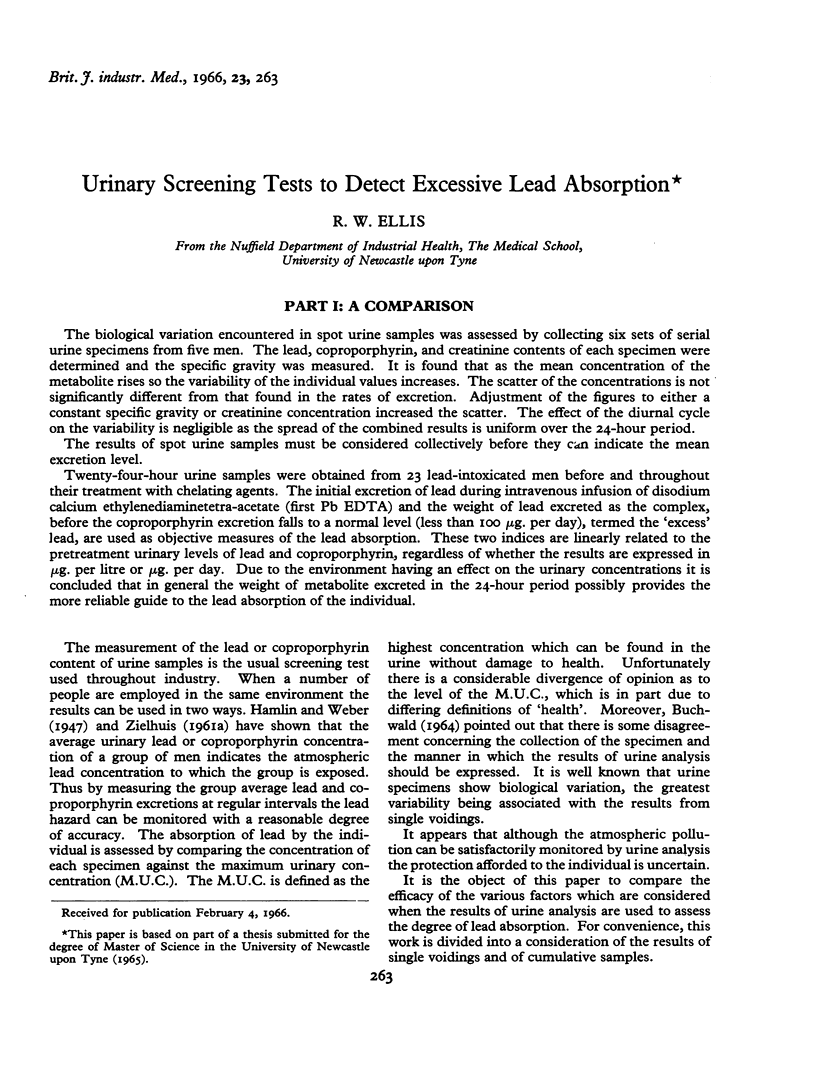
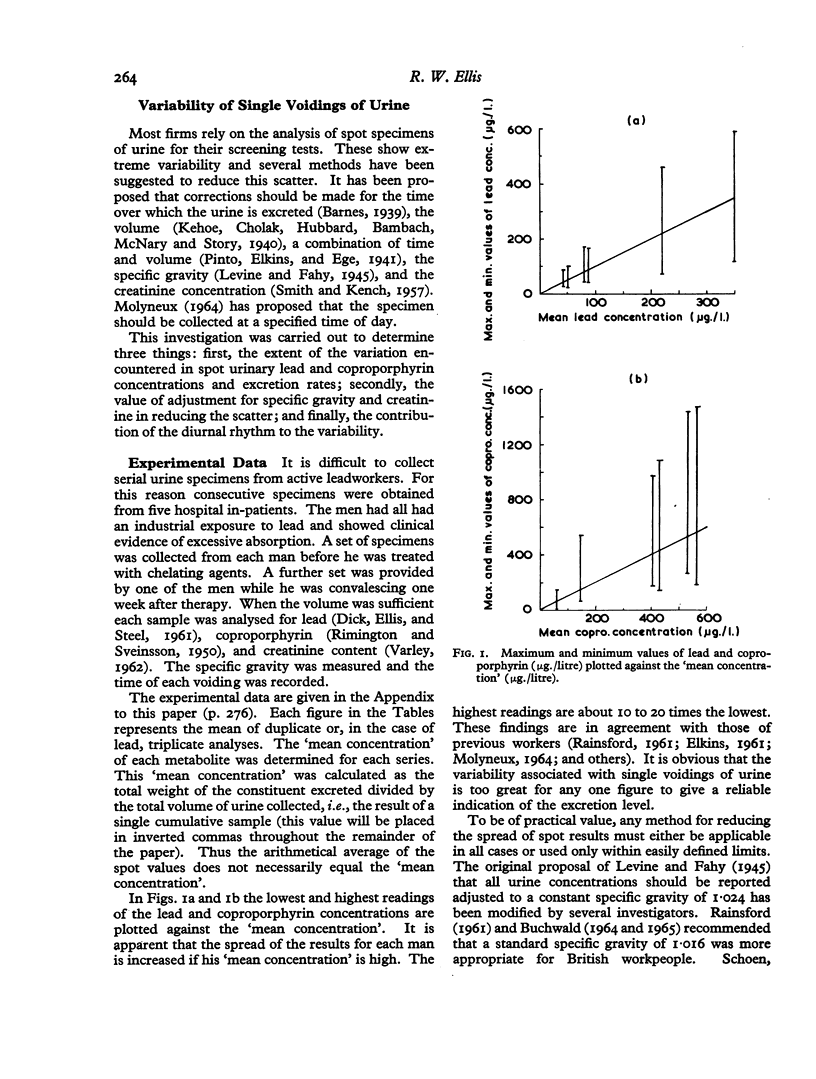
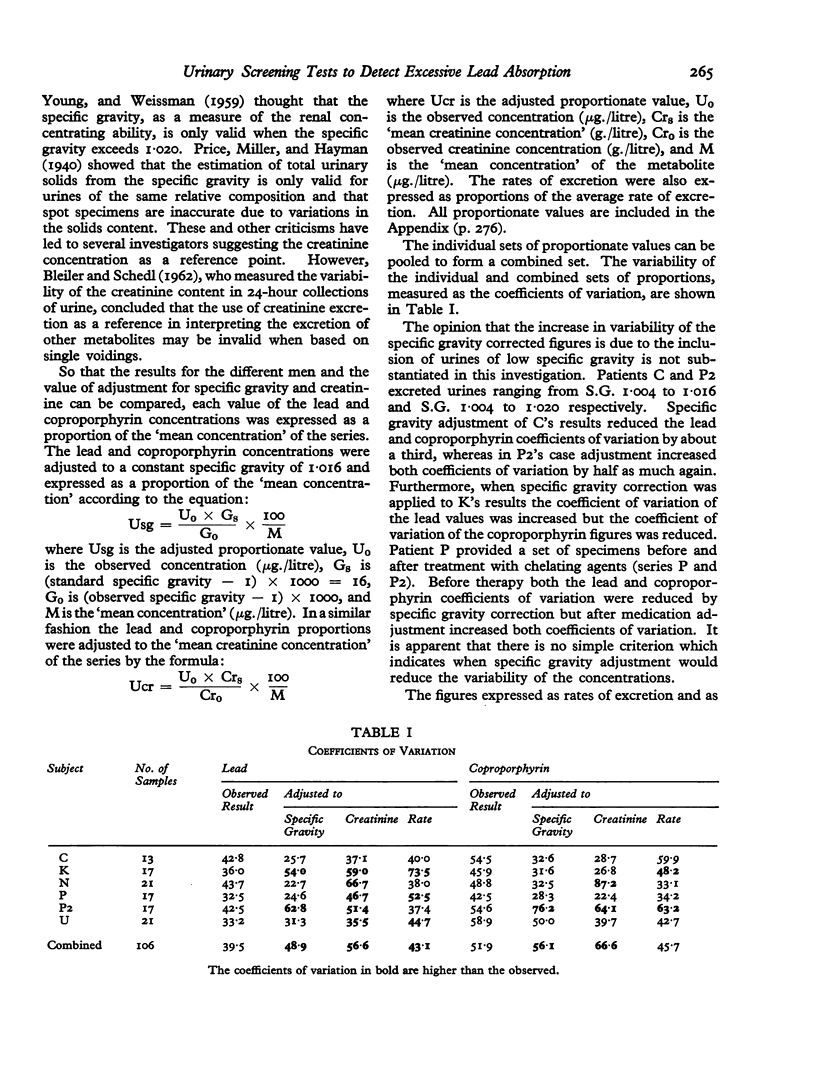
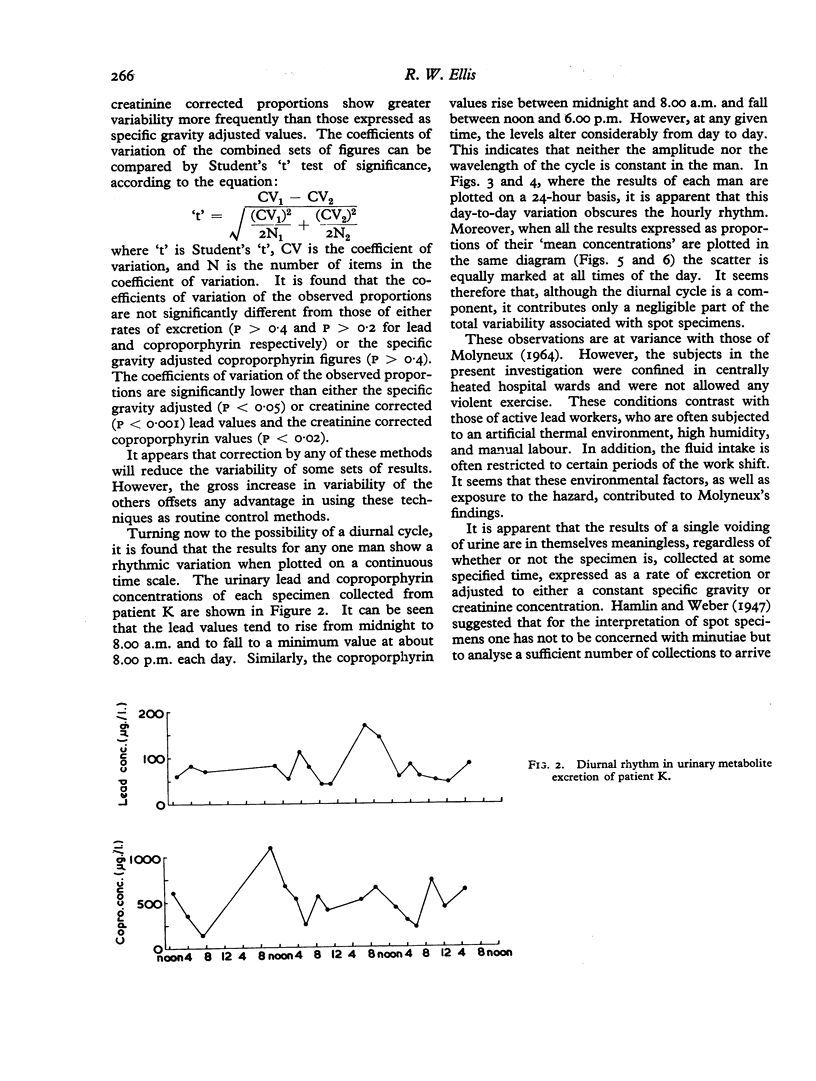
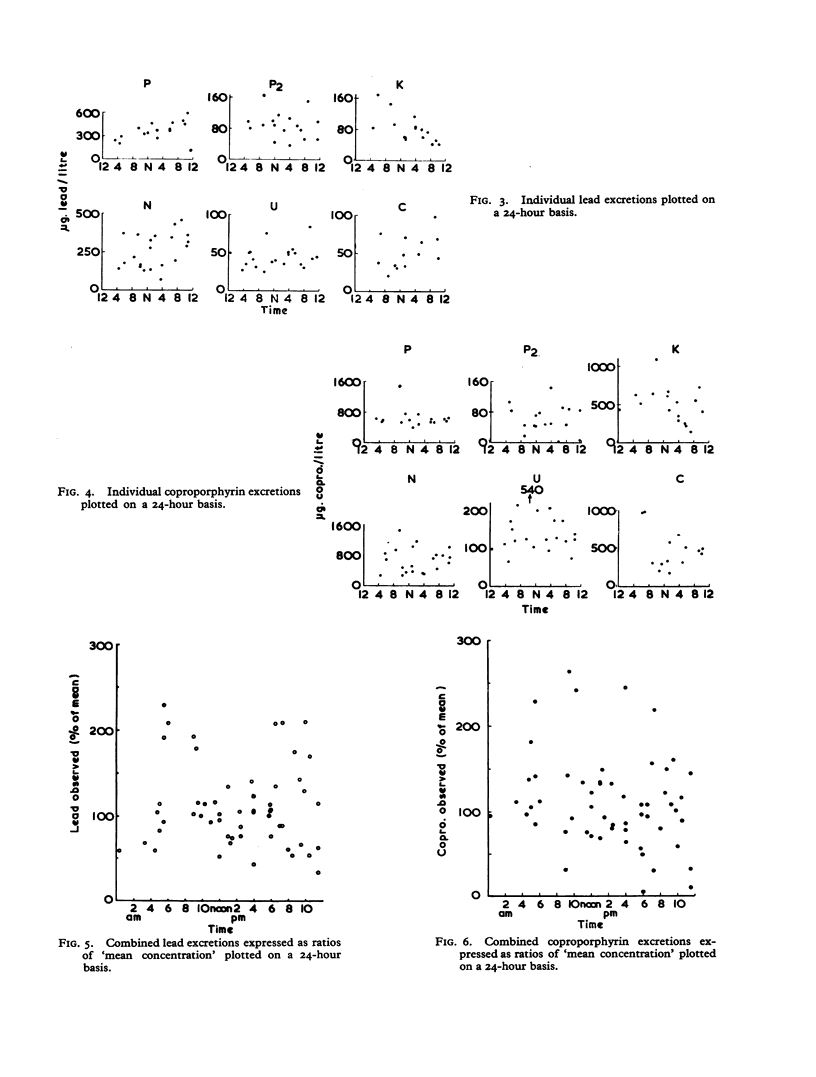
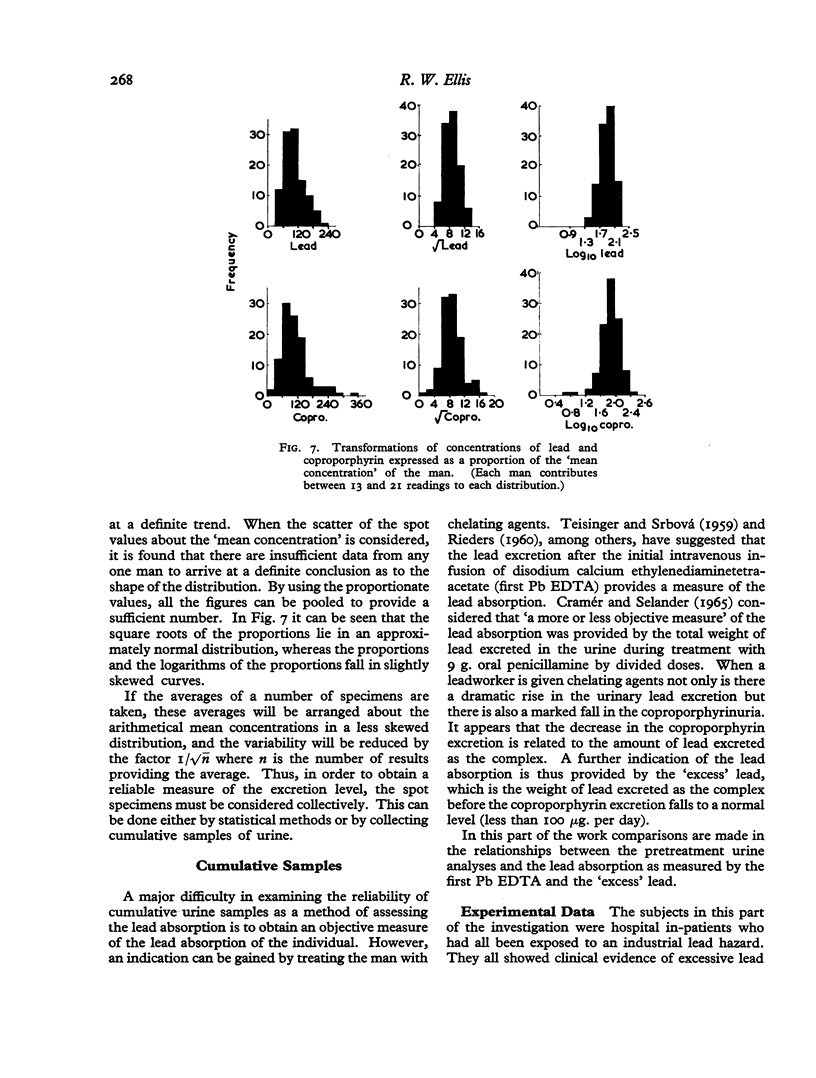
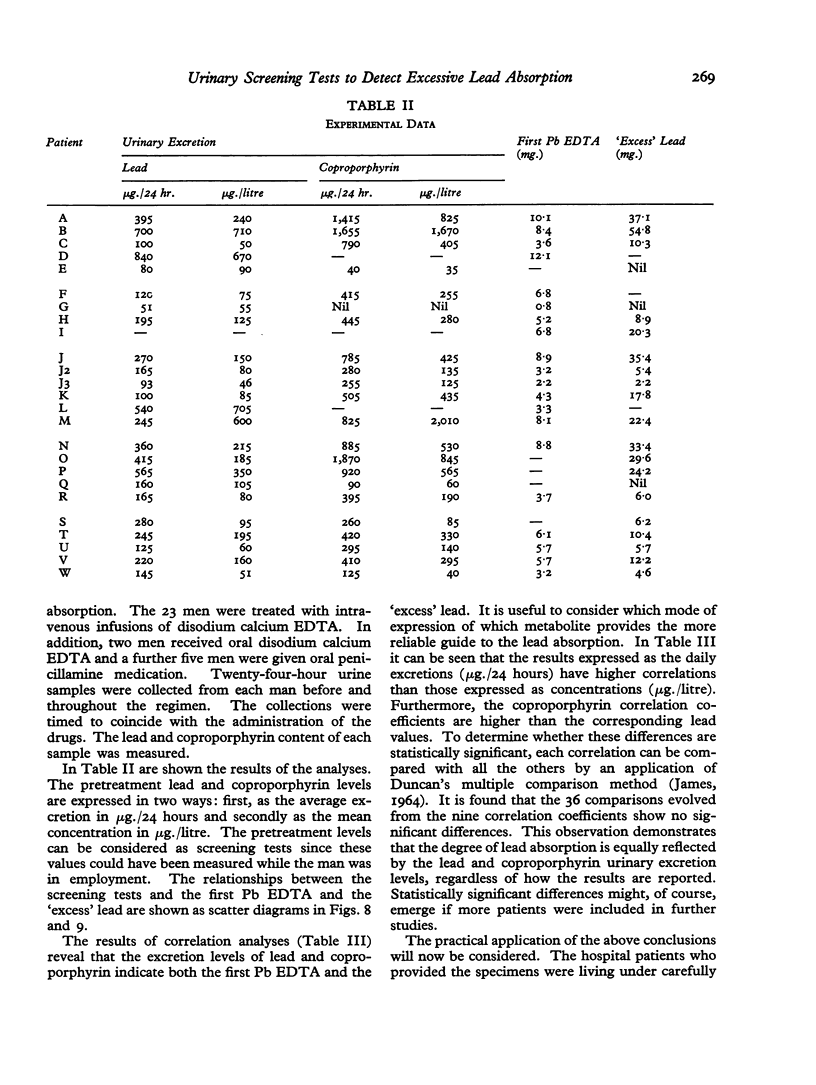
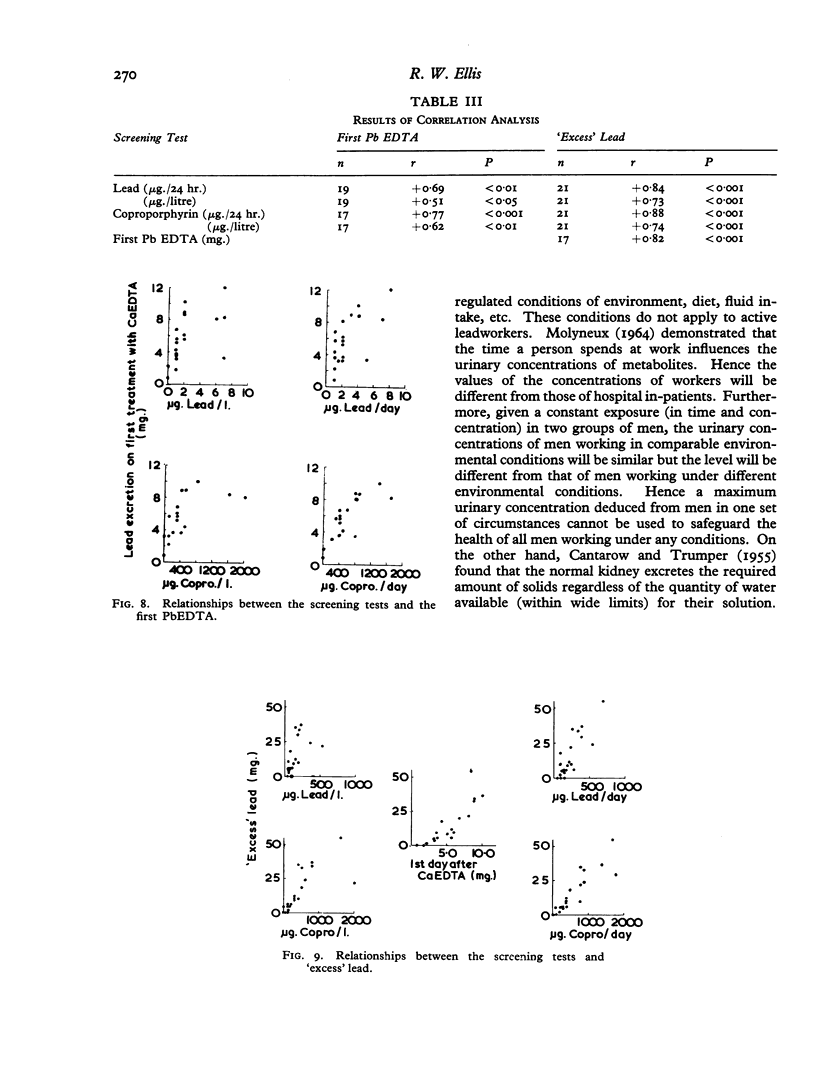
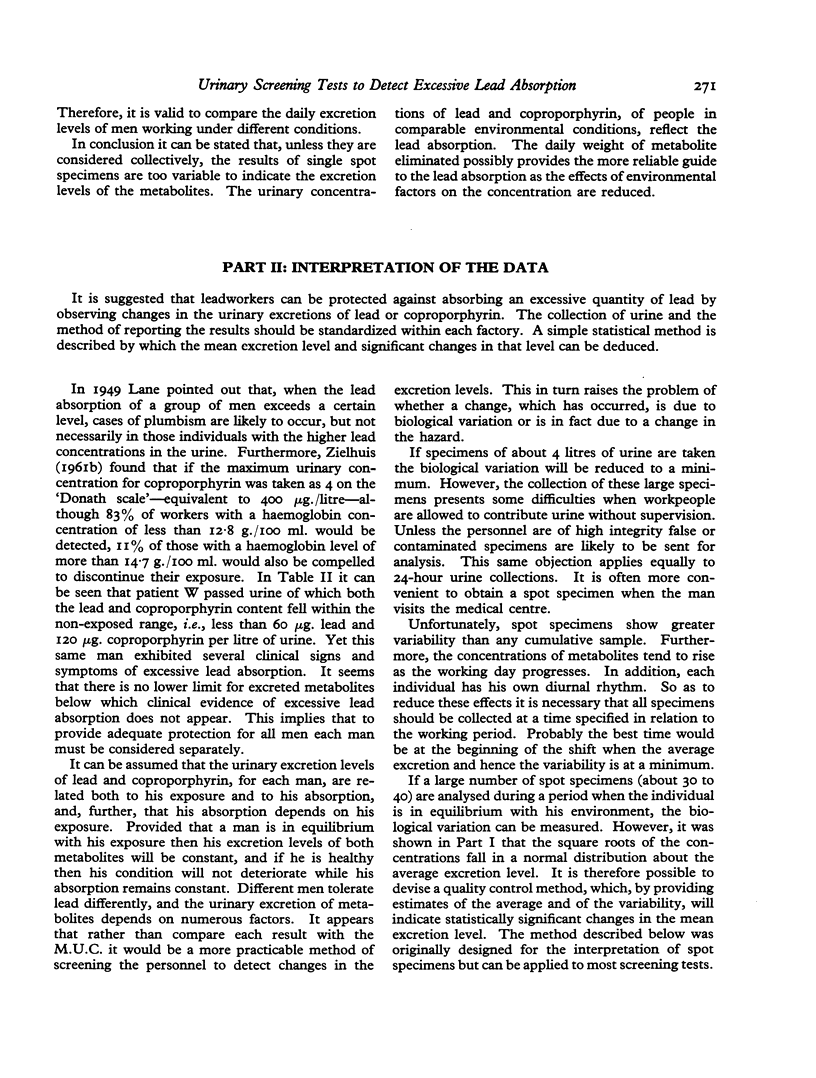
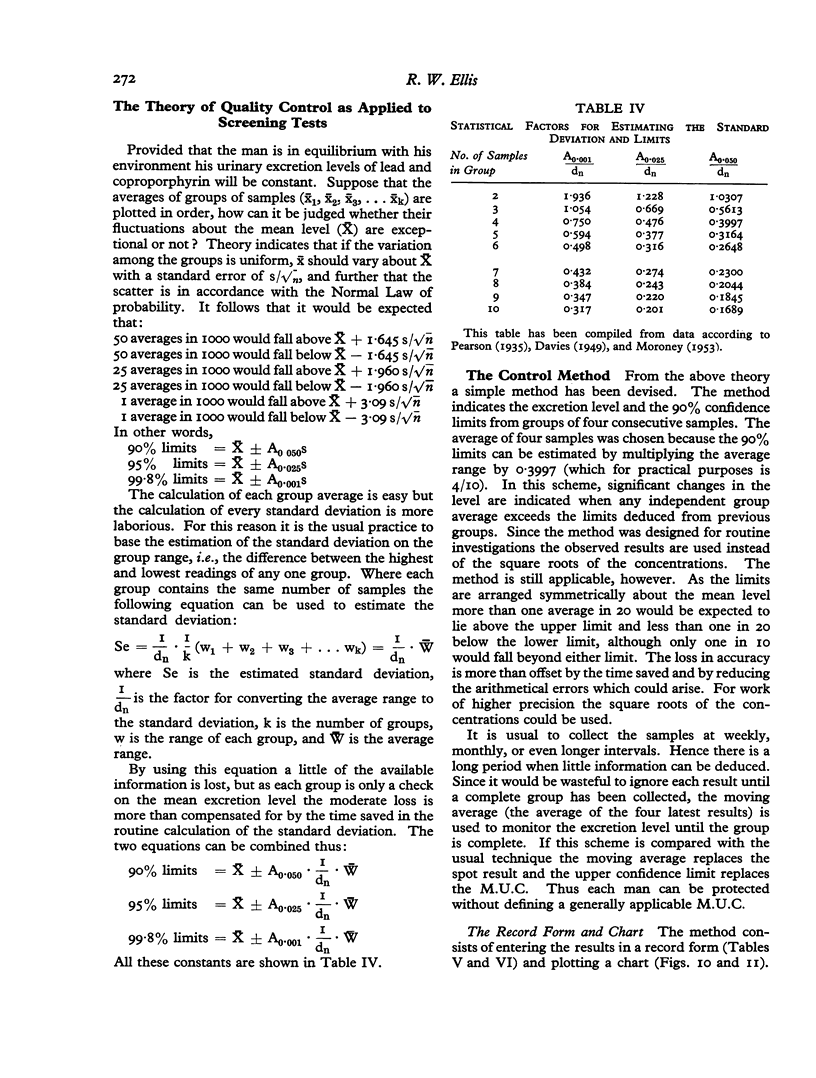
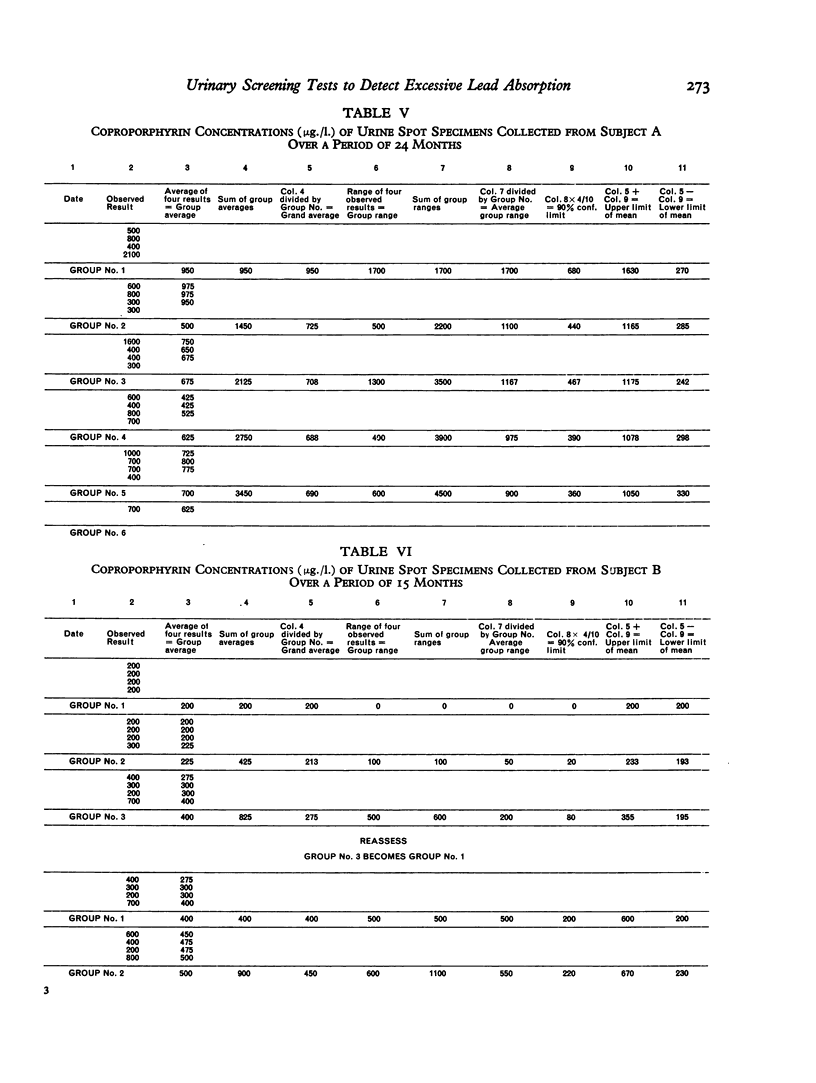
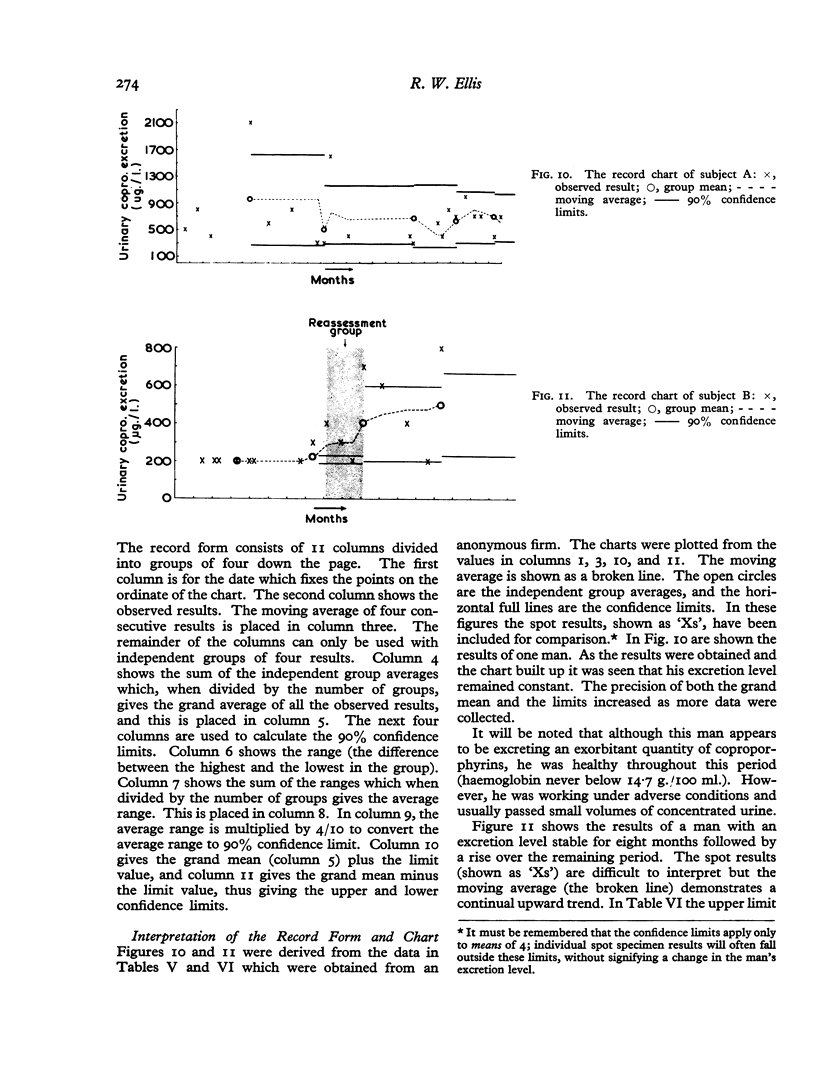
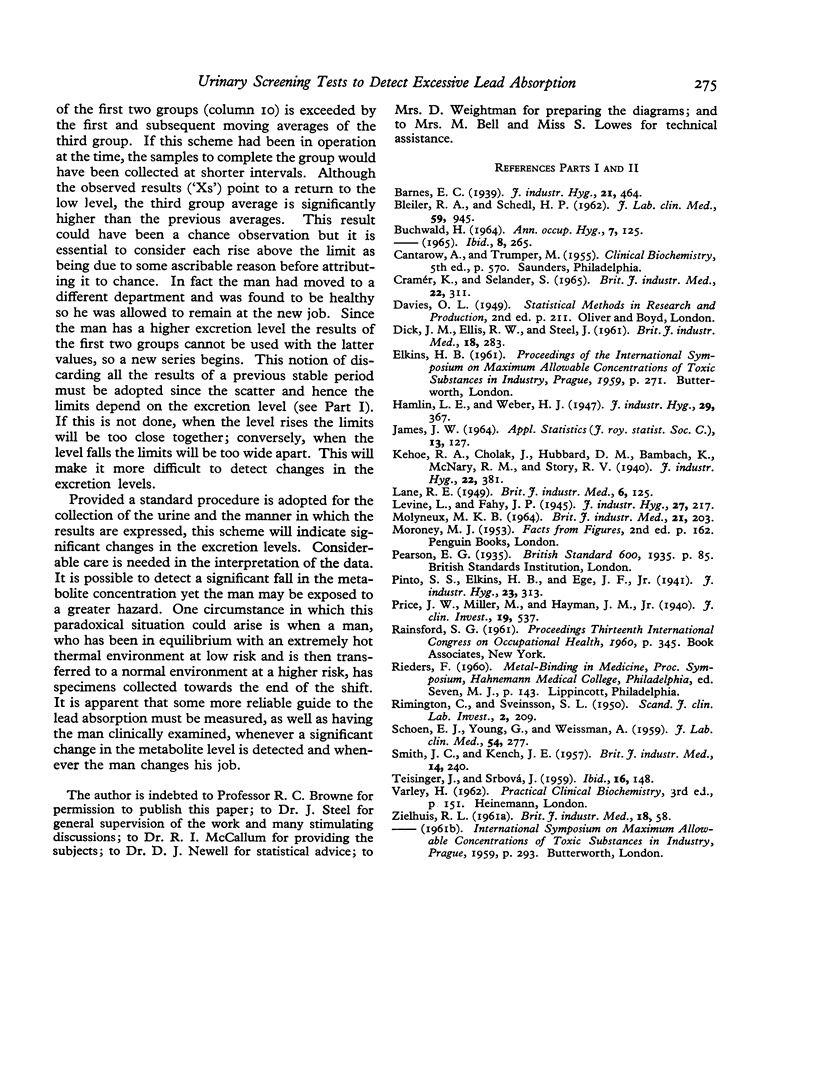
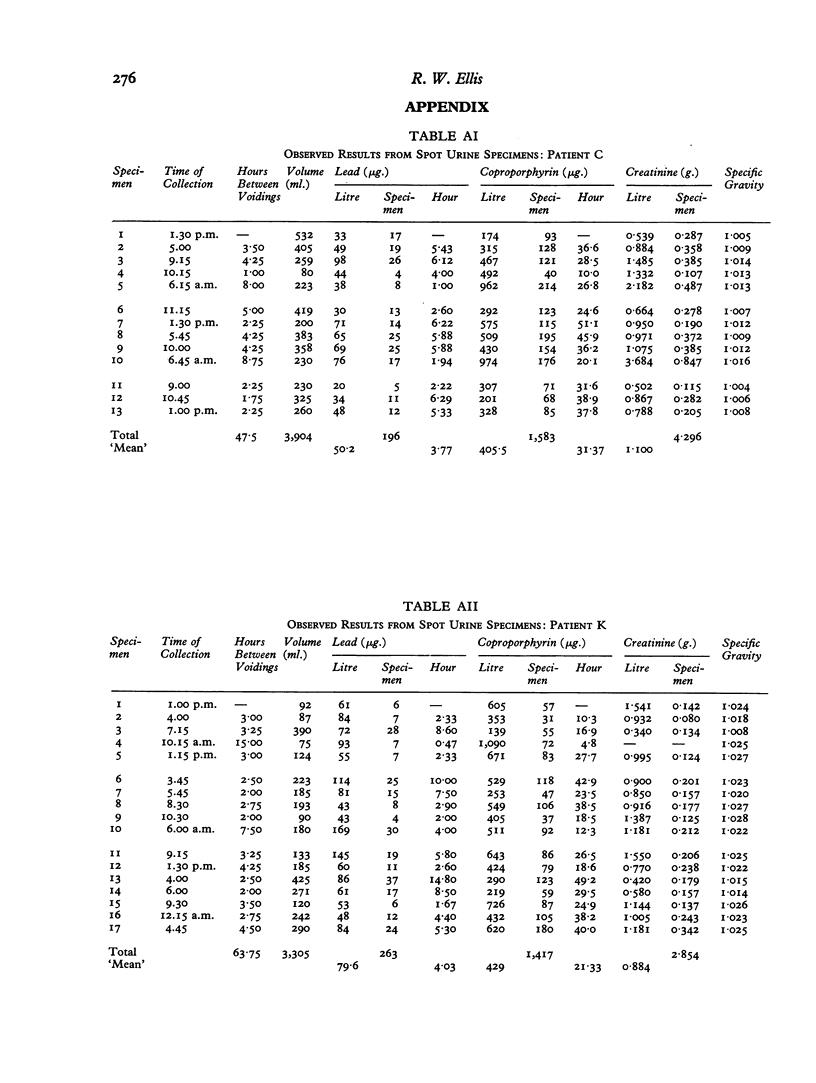
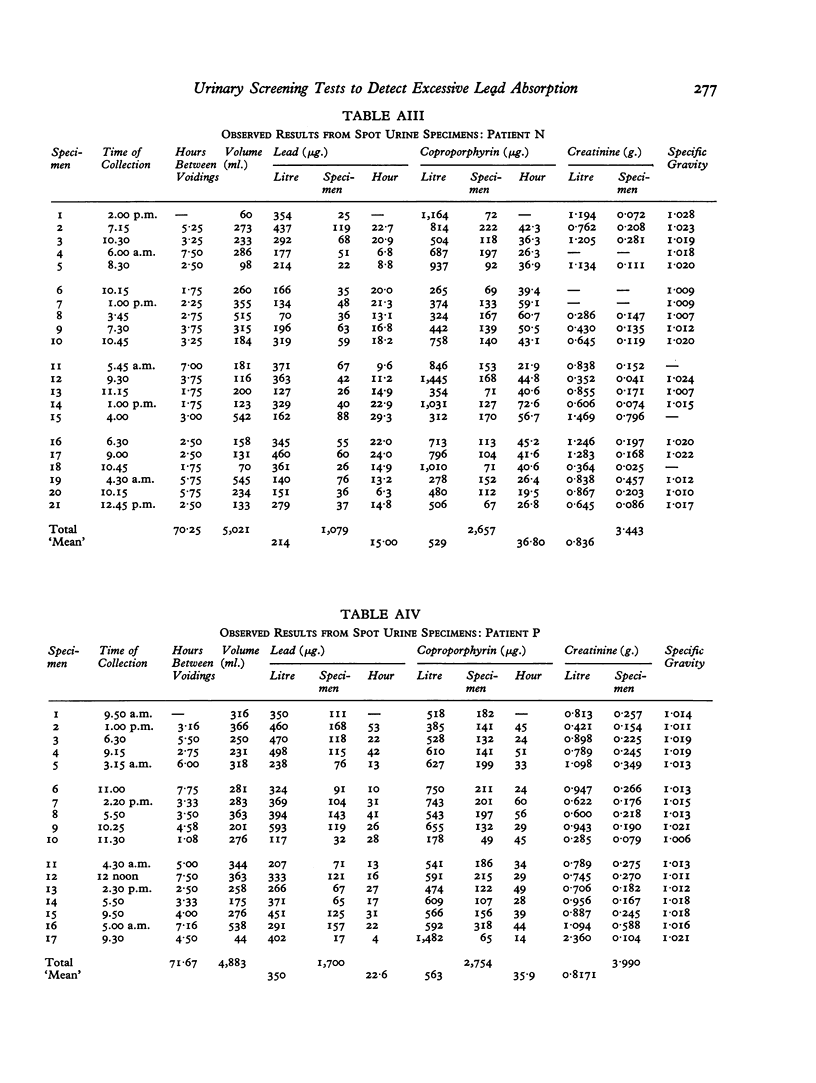
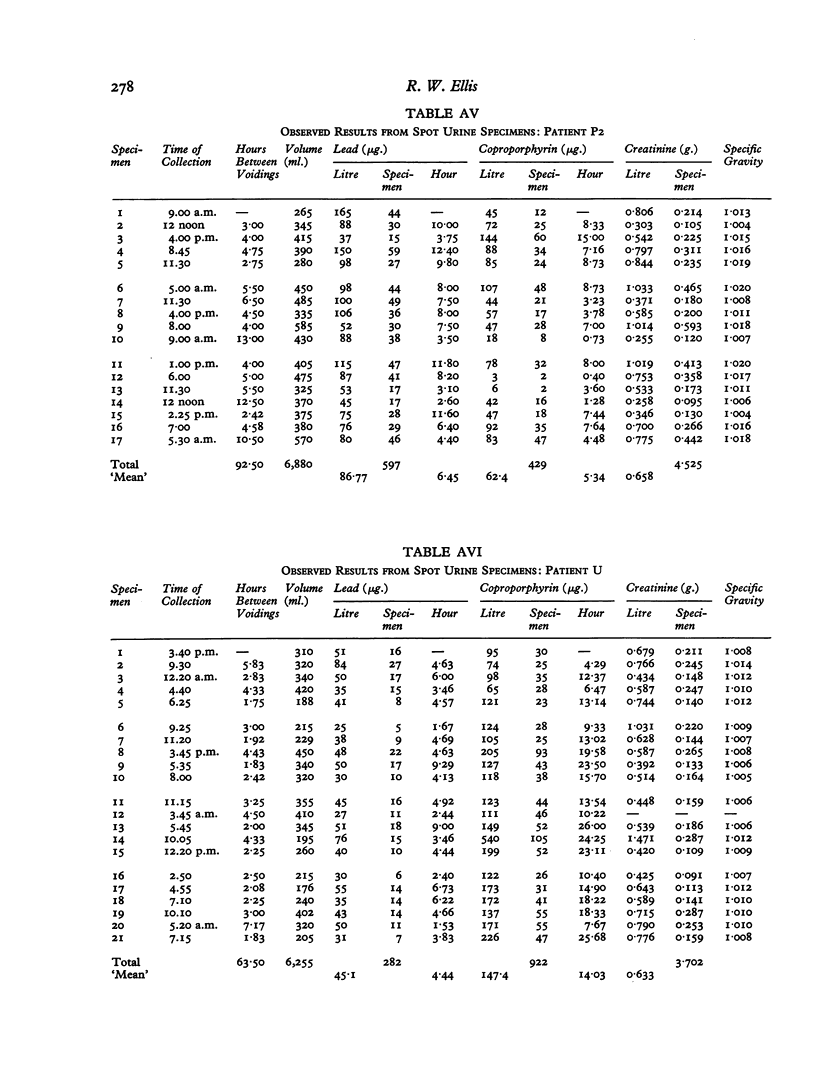
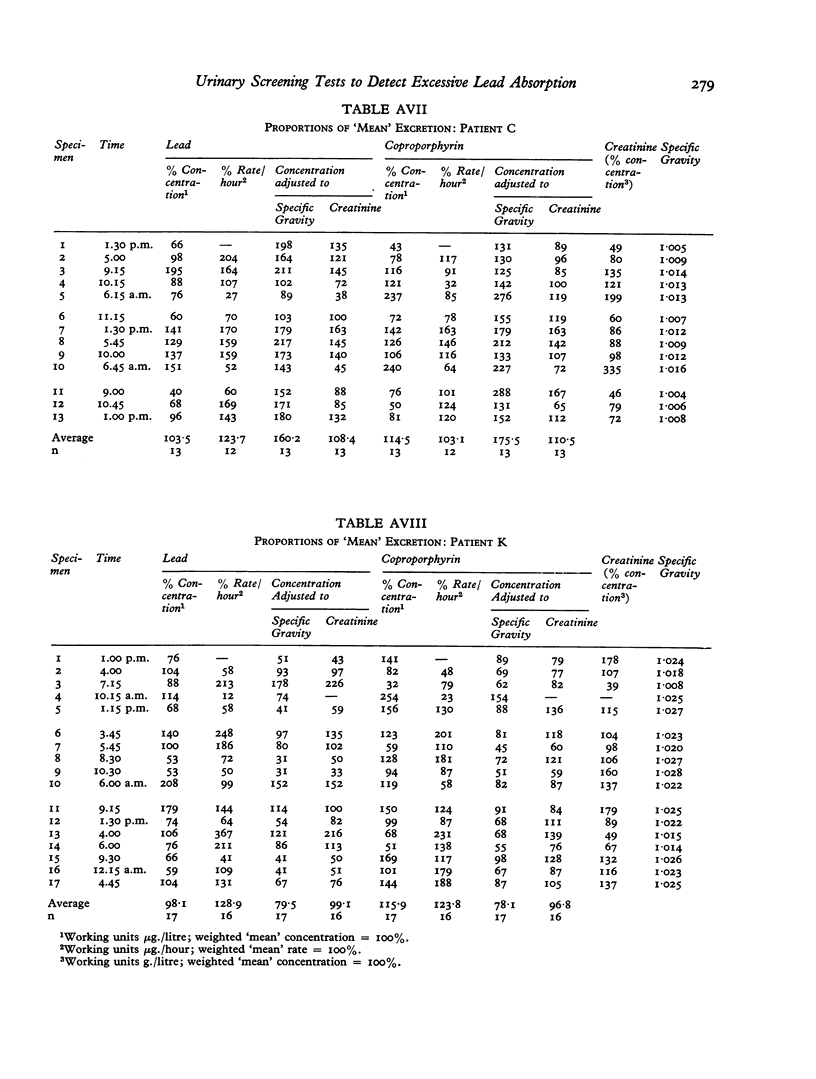
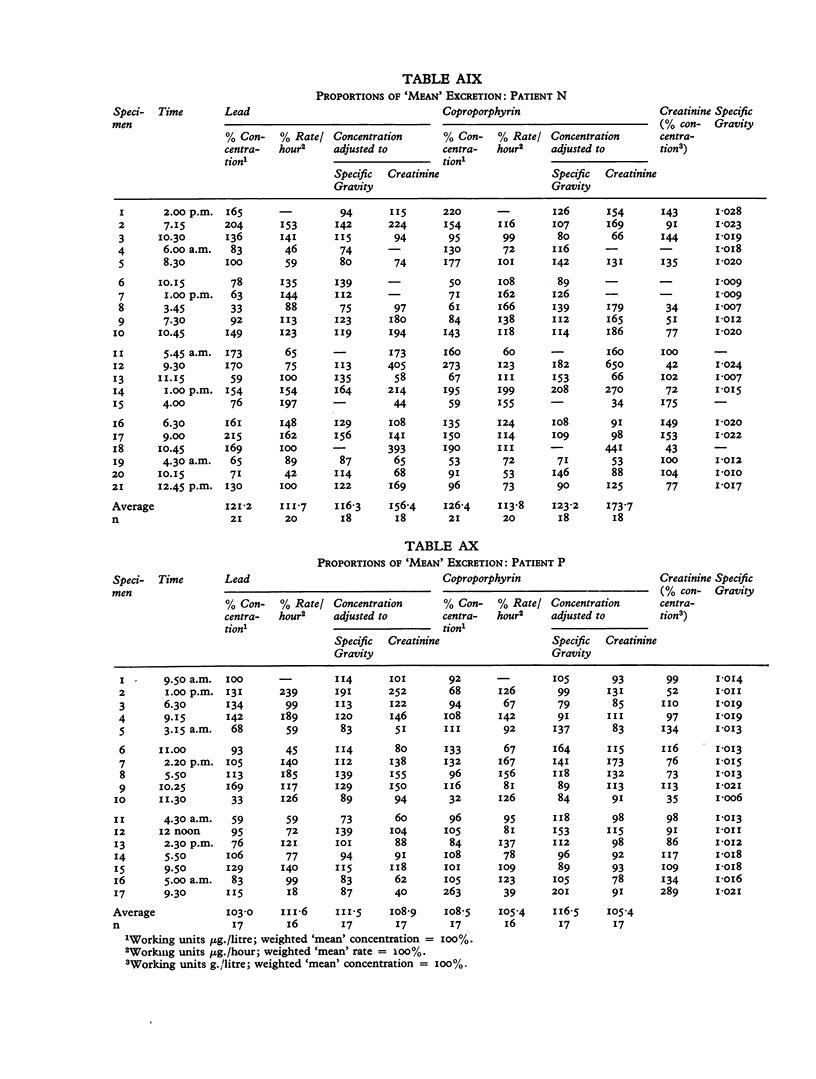
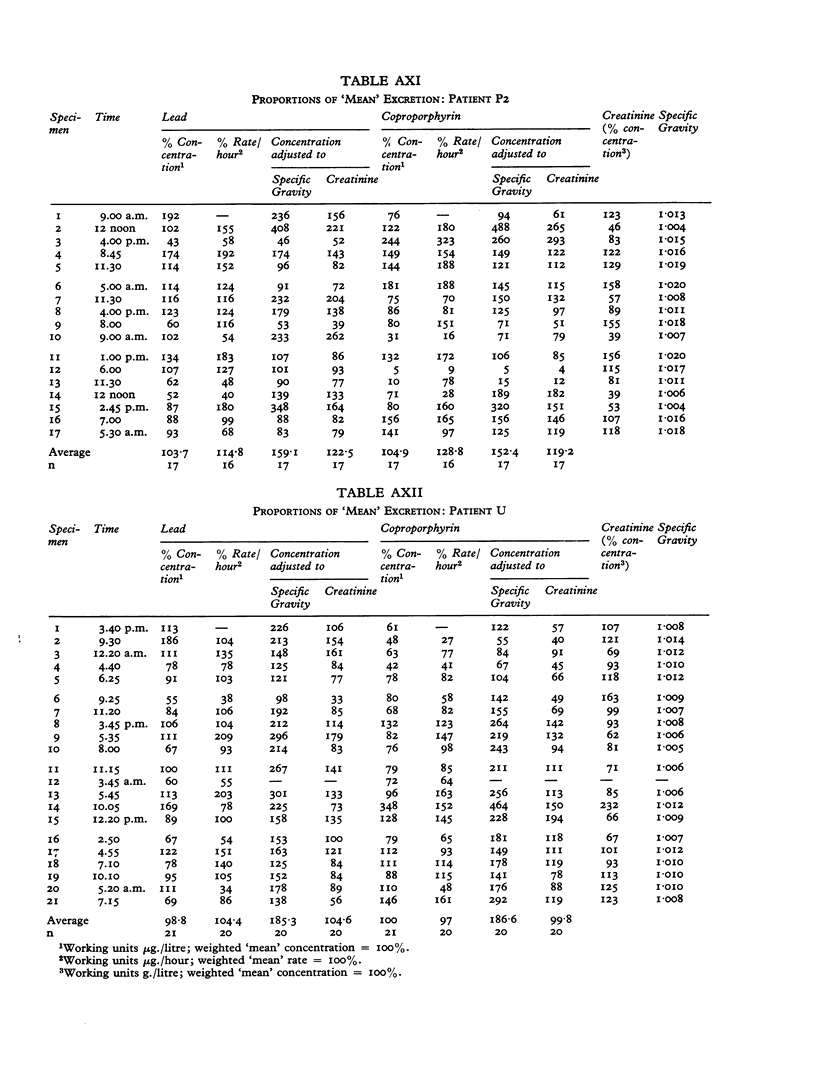
Selected References
These references are in PubMed. This may not be the complete list of references from this article.
- Price J. W., Miller M., Hayman J. M. THE RELATION OF SPECIFIC GRAVITY TO COMPOSITION AND TOTAL SOLIDS IN NORMAL HUMAN URINE. J Clin Invest. 1940 May;19(3):537–554. doi: 10.1172/JCI101157. [DOI] [PMC free article] [PubMed] [Google Scholar]
- RIMINGTON C., SVEINSSON S. L. The spectrophotometric determination of uroporphyrin. Scand J Clin Lab Invest. 1950;2(3):209–216. doi: 10.3109/00365515009049872. [DOI] [PubMed] [Google Scholar]
- SCHOEN E. J., YOUNG G., WEISSMAN A. Urinary specific gravity versus total solute concentration: a critical comparison. I. Studies in normal adults. J Lab Clin Med. 1959 Aug;54:277–281. [PubMed] [Google Scholar]
- SMITH J. C., KENCH J. E. Observations on urinary cadmium and protein excretion in men exposed to cadmium oxide dust and fume. Br J Ind Med. 1957 Oct;14(4):240–245. doi: 10.1136/oem.14.4.240. [DOI] [PMC free article] [PubMed] [Google Scholar]
- TEISINGER J., SRBOVA J. The value of mobilization of lead by ethylenediamine-tetra-acetate in the diagnosis of lead poisoning. Br J Ind Med. 1959 Apr;16(2):148–152. [PMC free article] [PubMed] [Google Scholar]


